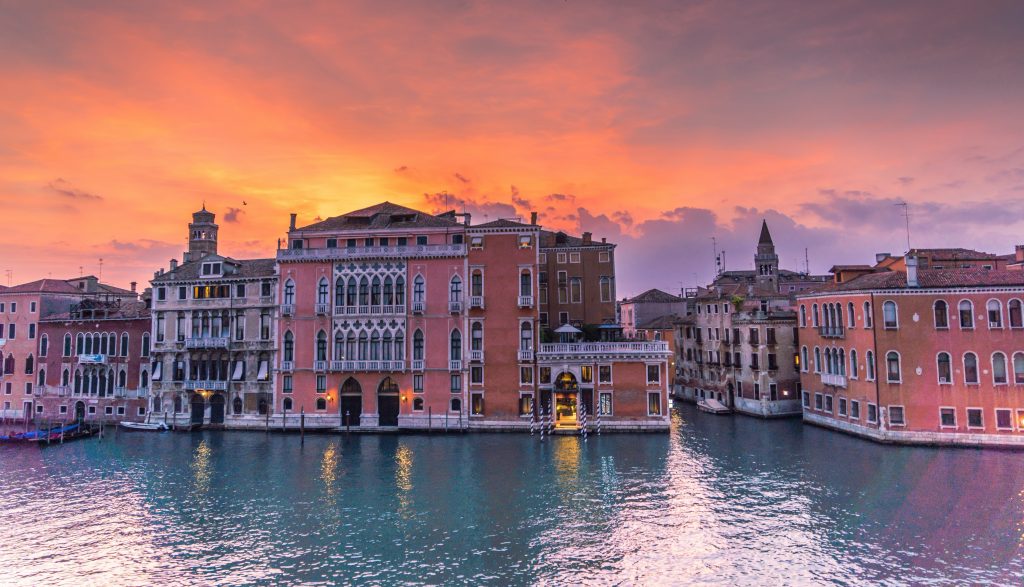Day after day one is drawn from terraferma to float in the lagoon, to watch the sunset, or to go gently past the palaces seeing their images reflected in the canal. The reflections are like paintings more beautiful than any painted by the greatest masters. […] If anything can rival Venice in its beauty, it must be its reflection at sunset in the Grand Canal.
Since the day it was born, Venice has been sinking.

Whether it was arrogance, circumstance, desperation, ambition, ingenuity, madness, magic – or an alchemist’s brew of all seven – it’s hard to fathom how exactly Venice came to be. Yet, upon marshland, silt, and sediment, this treasure chest masterpiece of an island city was conjured.
And how it thrived.
In the mid-medieval epoch, the Venetian Republic was unrivalled as a commercial and maritime powerhouse whilst much of Europe was splintered and politically parochial; backwaters to little
La Serenissima
in the lagoon. Its stable institutions, innovations, and strategically fortuitous positioning allowed it to play off and parley other powers either side of the seas, preserving and enhancing its own rich position as a trading hub monopoly. For a few centuries, it could be claimed that the beating heart of the modern world was here on Venice, this city of islands with a golden winged lion its calling card.

In the Middle Ages, the Republic’s ruler would venture out to sea as part of the Sposalizio del Mare (Marriage to the Sea) ceremony, to offer prayers and throw a ring to her. And, like most marriages, Venice’s relationship with the water – upon which it floats, depends, and sits at the mercy of – has always been one of give and take. The canals and the sea gave the Republic its fortunes, yet every winter, during the Acqua Alta , the streets and stores of Venice are reclaimed by burst banks. Slowly, imperceptibly, the balance of power shifts as sea lives rise and ancient walls dissolve. Recent studies say that Venice subsides by 1-2 mm each year, perhaps inevitable given its construction was based upon man conquering nature, yet ironically the subsidence is exacerbated each year by man-made influences such as gargantuan cruise ships being permitted entry into the Grand Canal.
The marriage is more fraught than ever, and this living, breathing, mesmerising treasure chest of a city may one day be buried for good by the very thing which gave it the world.
For the traveller, curating a long weekend or a week in Venice ( Venezia in Italian) can be challenging – from the sheer depth and breadth of museums, the centuries of culture and history, the crowds, and the idiosyncratic layout of it – and there is simply no way that you can see and do everything Venice has to offer in that amount of time. You can’t ‘do’ Venice, but merely experience and savour what you can in the time you have. That’s why it’s best to curate and pare down your itinerary so that it offers much of what you love, a lot of what you simply have to do whilst here, with a smidge of space allowed for serendipity.
After our own six day visit to Venice this summer, we’ve done some of the hard work for you – here are 13 wonderful things to do in Venice.

Top Tip // If your trip to Venice is coming up and you’re wondering how to get around the city of canals, we’d highly recommend buying a ticket that allows for unlimited use of the vaporetto (that’s the water bus service that ferries passengers around). You can buy tickets in advance here, and then collect your ticket from any of vaporetto stops without having to queue for the ticket offices. Find out more here.

